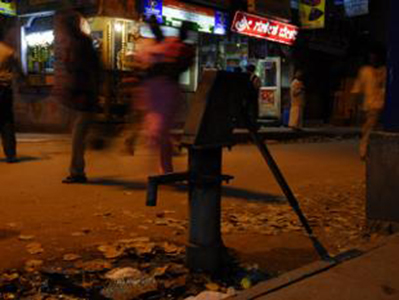- December 2, 2016
- Posted by: admin
- Category: Newspaper / Magazine Articles

BENGALURU: After a BWSSB special council meeting which was convened a few days ago, the chairman of the nodal body responsible for providing water to Bengaluru announced the city is heading towards a `water crisis’.
Well, the news is not surprising especially after the legal fight over the Cauvery waters between the two states which was almost like two kids fighting for a share of an already small piece of chocolate.
It is been announced that the city will experience disruption in water supply between January and May 2017. What is more amazing is that the BWSSB is now looking at groundwater as a substitute for the reduced supply from the Cauvery. This move is even more unsustainable compared to irregular supply from the Cauvery.
In 1950s, an economist by name Lionel Robbins said economics is a science which studies human behaviour as a relationship between ends and scarce means which have alternative uses. With respect to Bengaluru’s water supply, the scarce means are surface water and groundwater.
In the case of surface water, the total net water supply Bengaluru’s domestic sector receives after considering all sources including BWSSB’s most important and reliable source `the Cauvery Water Supply Scheme’ is 825 MLD (million litres a day).
On the other hand, the groundwater scene is not rosy as well. The most sustainable way of using groundwater is to only extract water from the dynamic resource which is the fluctuating layer of the water table.
According to the Central Ground Water Board, the net available groundwater in Bengaluru Urban -the water that can be extracted without using static resources (stagnant water table) -is estimated to be around 1,67,690 million litres per year. But what is worrying is the yearly increment in the rate of consumption of groundwater which is about 7%.
To satisfy this increasing demand, there is a huge increase in the number of bore-wells (5,000 to 4.08 lakh over the past three decades) which have been dug in the city . Of this, 7,920 bore-wells are owned and maintained by the BWSSB.
It is unfortunate that due to overdraft of available groundwater, the water table has shrunk from 100-120 metre (m) to about 76-91 m in just two decades. This signals Bengaluru’s groundwater abstraction has conveniently breached the dynamic threshold indicating unsustainability.
Another trend is that the extracted groundwater is not only used for domestic purposes but also being sold to commercial tankers, thereby creating a private unofficial water market in the city.
Since water is subsidised for the domestic sector, the cost of water to private tankers turns out to be meagre when compared to the price they charge to the consumers. To top this, a single tanker does around 20-30 trips in a day .
And there are a number of water tankers which operate in the city. So the volume of groundwater abstracted is unthinkable. The more severe problem here is who allowed them to abstract enormous amounts of water every day. Unfortunatel , there’s nobody to take responsibility neither for the menace created nor to regularise them.
Only now there is some initiative taken by the authority where the private water tankers are mandated to declare their source of water. This is not sufficient.
There is need for more stringent regulations and effective implementation to curb the illegal abstractions as there is a huge lobby involved in the private water market. Hope the authority takes note of the situation before it’s too late.
Kavya Shree K
